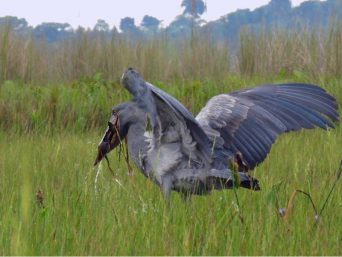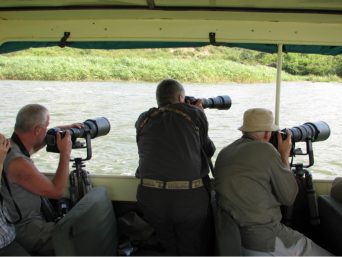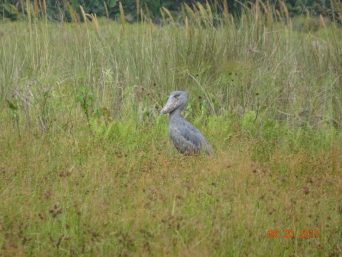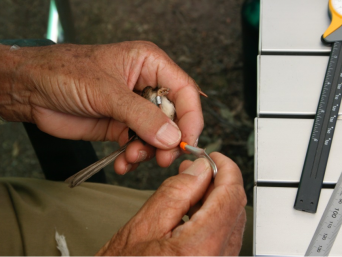Mabamba Bay (Shoebills)
We have an early breakfast and do an hour-and-a-half drive to Mabamba, a Ramsar site, and an Important Bird Area. The Mabamba wetland is one of the top two places in the world to find the Shoebill which is an uptick bird for so many birders on earth and Africa’s number one and highly sought-after; Mabamba offers over 80% chances for seeing this alien-looking-like bird the (Shoebill).
As we drive there, we might get African Green Pigeon, Great Blue, and Ross’s Turaco; they like patching high on the snags by the roadside. The wetland here is one of the top community-based initiatives in the country, and when we get there, we take community members’ used engine-powered boat that is big enough to carry a motorcycle.
While looking for the Shoebill, we should expect a collection of typical African water and nearby habitat birds like Malachite Kingfisher, Long-toed Lapwing, Blue-breasted Bee-eater, African Jacana, and Yellow-billed Duck. Here are also high chances for African White-backed Duck, Lesser Jacana, Papyrus Gonolek, Blue-headed Coucal, African Marsh Harrier, Fan-tailed Widowbird, Common Waxbill, Grey-capped Warbler, Madagascar, and Blue-cheeked Bee-eater depending on the season and several others.
After searching for the Shoebill, we will drive to the Equator, which is along the way for illustrations and photography experience. When we continue with the drive along the highway, we should expect the stunning Lilac-breasted Roller, Wahlberg’s and Long-crested Eagles, Eurasian Kestrel, Gray-backed Fiscal, and Bare-faced Go-away-bird.
At the dirt road, as we approach the park and our accommodation, we will look for Red-backed Scrub-Robin, Red-faced, and Singing Cisticolas. Occasionally, this stretch can be perfect for Verreaux’s Eagle-Owl, Red-necked and Crested Francolins, Emerald-spotted Wood-dove, Crowned Lapwing, Brown Snake-Eagle, and beautiful African Black-headed Oriole. A few mammals that included Zebra, Impala, Topi, Waterbuck, Dwarf Mongoose, the gigantic Common Eland, and Common Warthog show up sometimes.






